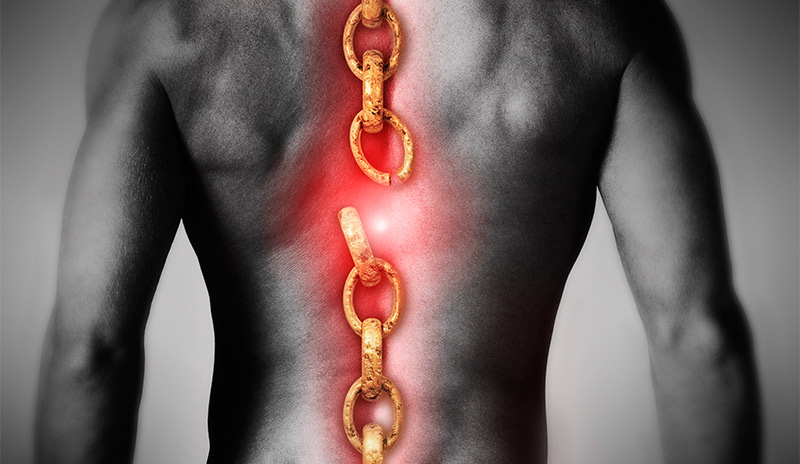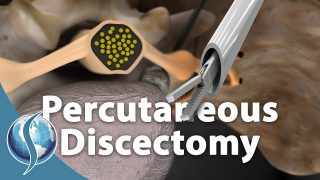10 Causes of Back Pain
If you live long enough, you will eventually experience back pain. Depending on the source, up to 80% of the population will experience a back pain episode that will cause at least temporary disability. Luckily, most will recover, and will get on with their life.
There are many potential causes of back pain.
1. Muscle strain. While the term strain and sprain are used interchangeably, there is a subtle difference. Strain usually means a pull or stretch of a muscle, or the muscle transition to a tendon. To make it simple, muscles are tissues that contract (shorten) or elongate (lengthen). Muscles are usually attached to a rope like tissue called a tendon, which then attaches to a bone. By the contraction of the muscle, bones are moved, allowing the joints of the body to flex and extend. Strains are about the muscles and the tendon junctions. In the spine, there are multiple paired muscles that hold the spine bones in alignment, yet also allow controlled movement. There are dozens of muscles that can be over stretched, causing pain to the lower back.
2.Ligament sprain. Ligaments are the rope like structures that connect one bone to another bone. The spine has multiple paired ligaments that also work together to hold the spine bones together during all activities. Ligaments are very strong, but when stretched, or even ruptured, can be a source of pain.
3.Disk herniation. Some may consider the disk a type of ligament, after all, a disk attaches one vertebra to another. It however, has many more functions. The disk, or nucleus pulposus, acts as a shock absorber, a ligament as well as a spacer. Disks do rupture causing multiple potential ways to cause pain. The center part of the disk is the nucleus. It contains may substances including Phospholipase A, Tumor Necrotic Factor alpha, and other cytokines, that when released, signals the body to react in a manner that will also signal inflammation. With rupturing of parts of the ligament, small pain sensory nerves may also be activated causing pain. Longer standing disk situations can also cause a growth of blood vessels and small nerves in and near the endplate bones of the vertebral bones. Those nerves can also be a potential cause of pain. In the acute phase, there is also the potential mechanical pressure of the disk on individual nerve fibers that will signal pain. What is most fascinating is that despite all these potential disk origins of pain, some people with large disk herniations may not have any pain throughout the process.
4.Facet joint arthritis. The spine consists of many paired small joints that connect the individual vertebral bodies on each other. Like any joint of the body, the cartilage lining of the joint can wear with age, causing exposure of the underlying bone, and nerves. This will signal a pain response. In addition, the ligaments (capsule) that hold the joints together can also stretch or rupture. This can also be a source of pain.
5.Back contusion. A contusion means injury to tissue secondary to a direct blow, or compressive load. This is usually a traumatically induced injury to the soft tissues of the back.
6.Autoimmune disease. In most normal situations, the body has the ability to remove injured, or aged cells or tissues of the body. For some, this normal process becomes too active, causing the body to remove healthy tissue. These are the so called autoimmune diseases and often times, it can manifest in pain to the muscles, ligaments, and tendons of the whole body. Because the spine has so many of these structures, these autoimmune diseases such as rheumatoid disease, psoriasis, ankylosing spondylosis, etc., will cause back pain.
7.Broken bone. When there is severe pain after a traumatic event, there is always the concern for a broken bone. The bones and surrounding tissue have nerve fibers that will detect the pain. In people who have osteoporosis (brittle bones), even a minor force can cause a broken bone, and therefore back pain.
8.Infection. Especially for people who have other medical problems like diabetes, poor nutrition, immunodeficiency, and obesity, infection can be a cause of spine pain. The symptoms may not present with the classic sweats or fevers, but more likely with pain, and weightloss.
9.Cancer. Cancer causing spine pain is usually secondary to metatastic disease. In other words, cancer spreading from another body part to the spine. Usually it means the bones of the spine are effected, with activation of a chemical inflammatory response as well as irritation of the nerves. For people with prior history of cancer, most Physicians will have a higher index of suspicion for this possibility. For people with back pain, and unexplained weight loss, cancer or infection will be considered.
10.Hip arthritis. Many people will confuse complaints of buttock pain, and groin pain with back pain. If a person complains of back pain, but also pain to the groin, or inability to change their socks, or difficulty with tying their shoes, the hip may actually be the source of back pain. Because the arthritis prevents movement of the hip, the lower back must take more of the pressure.
Of course there are many other sources of back pain such as kidney stones, ulcers, shingles, etc. If your back pain is severe, or does not improve after a few days, please consider getting an evaluation to make sure you do not have a serious cause of the back pain. Luckily, greater that 90% of the time, the back pain episode is temporary, or mild. In other instances, it can be a significant source of pain. Please seek medical advice if you have concerns.
Last modified: January 5, 2018










